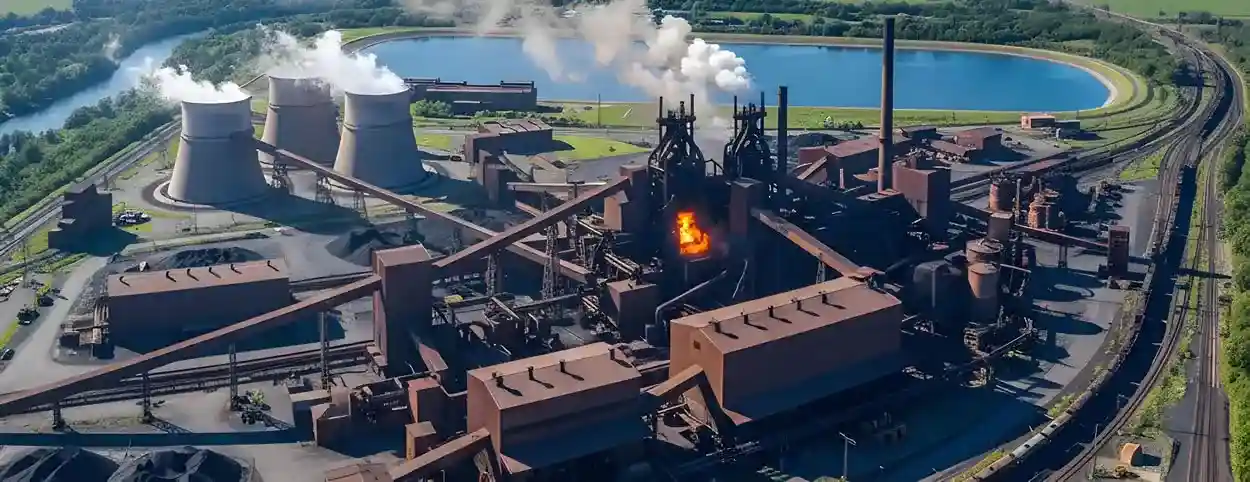
Rolling mill equipment plays a critical role in the production process of iron and steel products. As global demand for high-quality iron and steel continues to grow, iron mills require efficient,reliable, and automated rolling solutions to improve productivity,reduce costs, and ensure product consistency.This solution outlines the applications, advantages, and operational value of rolling mill equipment in iron mills.
Rolling is a metal forming process where metal stock is passed through one or more pairs of rolls to reduce the thickness and make the thickness uniform. This process improves the mechanical properties of the material and achieves precise dimensions. In iron mills, rolling mills handle various stages, from breaking down large ingots to finishing specialized products.
Blooming/Slabbing Mills: These are the initial rolling mills that break down large cast ingots into blooms (square or rectangular cross-section) or slabs (wider, flatter cross-section). This prepares the material for subsequent rolling processes.
Billet Mills: Blooms are further rolled into billets, which are smaller square cross-section intermediate products. Billets are often used as feedstock for bar, rod, and wire mills.
Plate Mills: These mills produce steel plates of various thicknesses and widths, used in construction, shipbuilding, and heavy machinery.
Hot Strip Mills: In hot strip mills, slabs are continuously rolled at high temperatures to produce thin, long strips of steel, which are then coiled. These coils are often further processed in cold rolling mills.
Cold Rolling Mills: Operating at room temperature, cold rolling mills further reduce the thickness of hot-rolled strips, improving surface finish, dimensional accuracy, and mechanical strength.
Bar and Rod Mills: These mills produce round, square, or hexagonal bars and rods used in construction (rebar), manufacturing, and as feedstock for wire drawing.
Section Mills: Section mills produce structural shapes like I-beams, H-beams, angles, and channels, which are essential components in building construction and infrastructure projects.
Seamless Pipe Mills: Specialized rolling processes are used to create seamless pipes and tubes, which are critical for oil and gas pipelines, boilers, and other high-pressure applications.
Tube and Pipe Mills (Welded): For welded pipes, strips or plates are formed into a circular shape and then welded along the seam. Rolling equipment plays a role in forming the strip and sometimes in sizing the welded pipe.
Two-High Mill: Consists of two rolls rotating in opposite directions.
Three-High Mill: Features three rolls, allowing for rolling in both directions without reversing the material.
Four-High Mill: Uses two smaller work rolls backed by two larger backup rolls, providing greater rigidity and precision for thin materials.
Cluster Mill (e.g., Sendzimir Mill): Employs multiple backup rolls to support very small work rolls, ideal for extremely thin and hard materials.
Continuous Mill: Multiple rolling stands are arranged in a series, allowing the material to be rolled continuously, increasing production efficiency.
Benefits of Using Rolling Mill Equipment in Iron Mills
Improved Efficiency: Automated rolling lines increase output while reducing labor intensity.
Energy Saving: Modern rolling mill technology minimizes energy consumption during deformation.
Enhanced Product Quality:Consistent thickness, dimensional accuracy, and superior surface finish.
Flexibility in Production: Capable of producing a wide range of iron products for different industries.
Cost Reduction: Lower material waste, reduced downtime, and optimized process control.
Challenge 1: High Energy Consumption
Solution: Adoption of advanced rolling mill drives, reheating furnaces, and regenerative energy systems.
Challenge 2: Quality Consistency
Solution: Precision automation, online monitoring systems, and advanced control technologies.
Challenge 3: Maintenance and Downtime
Solution: Use of durable rolling components, predictive maintenance, and digital twin technology for monitoring equipment health.
Rolling mill equipment is indispensable in the iron and steel industry, enabling iron mills to meet modern production requirements with higher efficiency, precision, and sustainability.By adopting advanced rolling mill solutions, iron mills can strengthen their competitiveness, reduce operational costs, and deliver superior-quality products to the global market.
If you have any product related questions, please feel free to call us at any time

With 30 years of professional experience, we customize efficient and energy-saving rolling mill production lines, providing you with one-stop service from design to installation and commissioning, helping you achieve steady growth in the steel industry.
Go
Top
SHENLONG Machinery · Your Rolling Equipment Expert ·